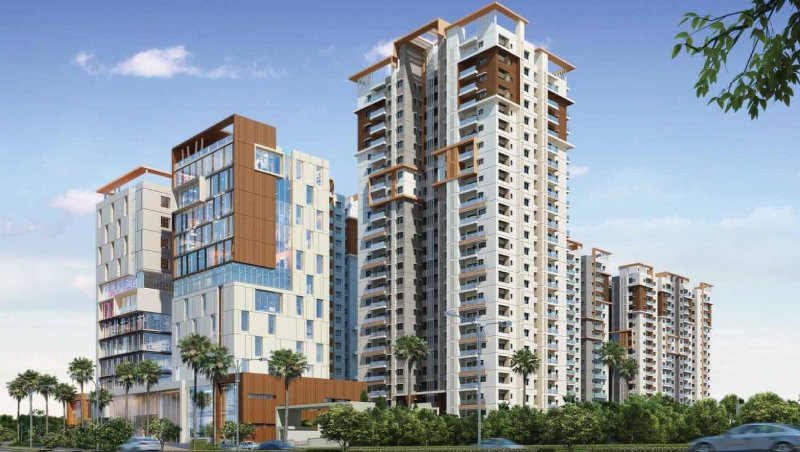Real Estate
Curtain Walls vs. Traditional Façades: A Comparative Analysis

When it comes to building façades, architects and developers are faced with a critical decision: whether to choose a traditional façade or opt for a modern curtain wall system. Each approach has its unique features and advantages. In this blog post, we will attempt a comparative analysis of curtain walls and traditional façades to help you make an informed choice for your next construction project.
Traditional Façades:
Solid and Substantial: Traditional façades are typically constructed with solid materials like brick, stone, or concrete. They offer a sense of permanence and durability, making them suitable for a wide range of architectural styles.
Thermal Mass: Solid materials used in traditional façades have excellent thermal mass properties. They can absorb and release heat slowly, contributing to energy efficiency by helping regulate indoor temperatures.
Aesthetic Versatility: Traditional façades provide a classic and timeless aesthetic. They can be customised with various textures, colours, and patterns to match the architectural theme.
Maintenance: While traditional façades are durable, they may require regular maintenance, including repointing, cleaning, and occasional repairs. The level of maintenance depends on the materials used.
Limited Transparency: Traditional façades often feature smaller windows, which can limit the amount of natural light allowed into the building. This may necessitate the use of artificial lighting, potentially increasing energy costs.
Curtain Walls:
Transparency and Modernity: Curtain walls are known for their extensive use of glass and aluminium frames, creating a sleek, modern appearance. They maximise natural light, providing a sense of openness and connectivity with the outdoors.
Energy Efficiency: Advanced curtain wall systems incorporate energy-efficient glazing, which can help reduce heating and cooling costs by optimising thermal insulation and minimising solar heat gain.
Design Flexibility: Curtain walls offer architects and designers greater design flexibility. They can create impressive façades with expansive glass surfaces and intricate geometric patterns,particularly emphasising glass facade.
Maintenance: While curtain walls require less maintenance than traditional façades, they are not totally maintenance-free. Regular cleaning of glass and inspection of seals and joints are necessary to prevent water infiltration and to ensure longevity.
Cost Considerations: Curtain walls can be costlier to install initially due to the use of high-quality materials and complex installation methods. However, long-term energy savings and design benefits may offset the initial investment.
Choosing the Right Façade for Your Project:
- Aesthetic Vision: Consider the architectural style and visual impact you want to achieve. Traditional façades offer timeless elegance, while curtain walls provide a modern and transparent look.
- Energy Efficiency: If energy efficiency is a priority, curtain walls with energy-efficient glazing can help reduce long-term operating costs. Traditional façades can also be designed for energy efficiency but may require additional insulation.
- Budget: Evaluate your budget constraints and long-term cost projections. While curtain walls may have higher upfront costs, they can offer energy savings over time.
- Maintenance: Consider the maintenance requirements and ongoing costs associated with your chosen façade. Both options require upkeep, but the level of effort may vary.
- Building Function: The function of the building and its occupants’ needs can also influence your decision. For instance, curtain walls are well-suited for offices and commercial spaces that benefit from natural light.
Conclusion:
The choice between curtain walls and traditional façades is a significantly important decision in architectural design. Both options have their undoubted merits as both can contribute to a building’s functionality, aesthetics, and energy efficiency. By carefully considering your project’s goals, budget, and design vision, you can select the façade type that best aligns with your objectives to create a lasting and impressive architectural statement.
-

 Sports4 weeks ago
Sports4 weeks agoAl Ahly vs Inter Miami, 2025 FIFA Club World Cup – Preview, Prediction, Predicted Lineups and How to Watch
-
Health3 weeks ago
Back to Roots: Ayurveda Offers Natural Cure for Common Hair Woes
-

 Tech3 weeks ago
Tech3 weeks agoFrom Soil to Silicon: The Rise of Agriculture AI and Drone Innovations in 2025
-

 Startup4 weeks ago
Startup4 weeks agoHow Instagram Is Driving Global Social Media Marketing Trends
-

 Science5 days ago
Science5 days agoJuly Full Moon 2025: Everything You Should Need to Know, When and Where to See Buck Moon
-

 Sports3 weeks ago
Sports3 weeks agoFIBA 3×3 World Cup 2025: Full Schedule, Preview, and How to Watch
-

 Gadget3 weeks ago
Gadget3 weeks agoThings to Know about Samsung Galaxy S26: What’s New and What’s Next
-

 Sports4 weeks ago
Sports4 weeks agoWorld Judo Championships 2025: Full Schedule, Date, Time, Key Athletes and How to Watch













